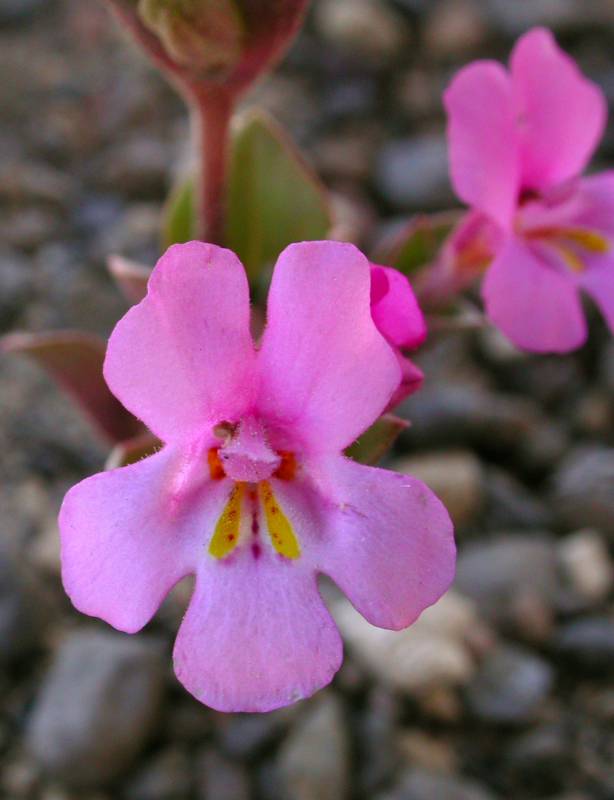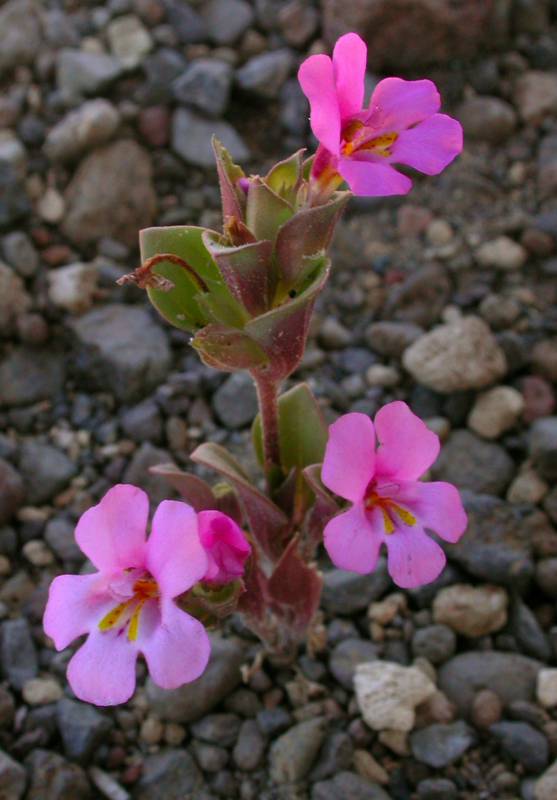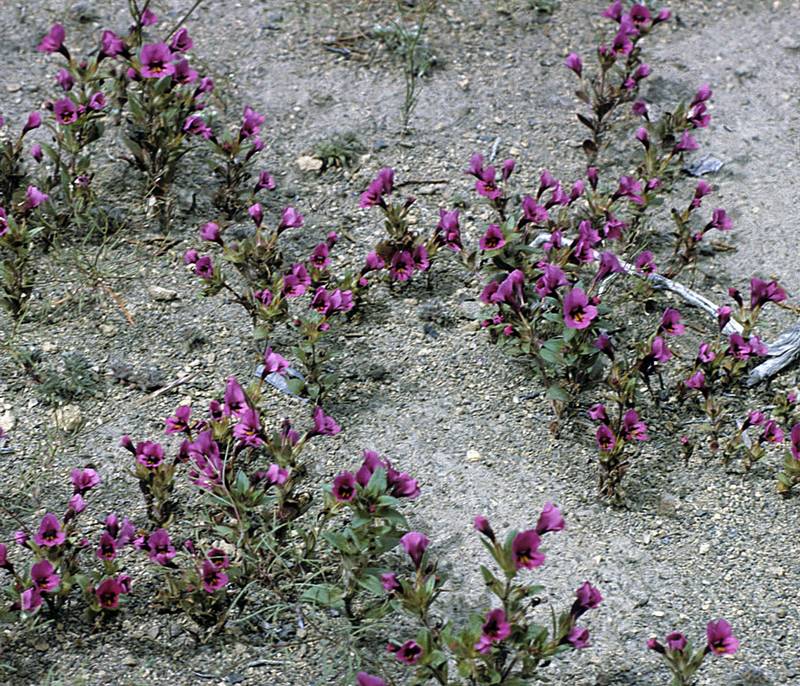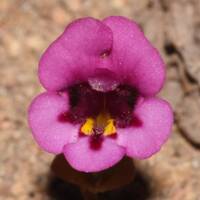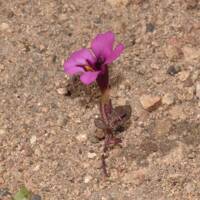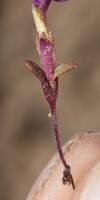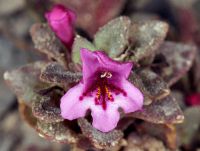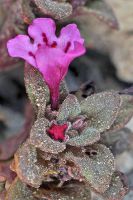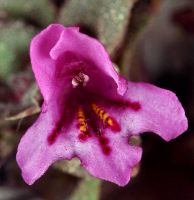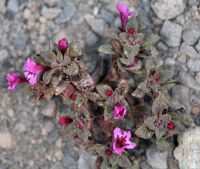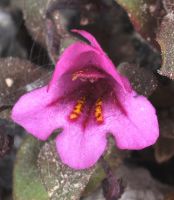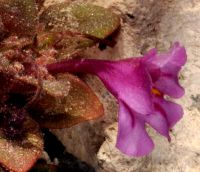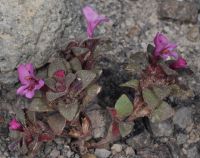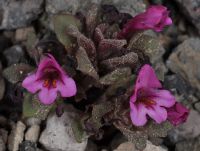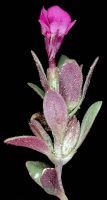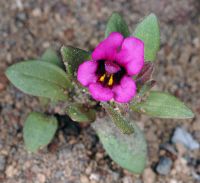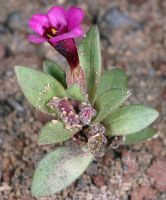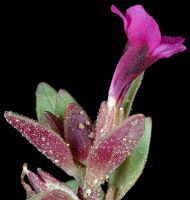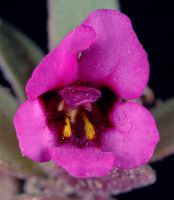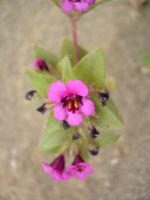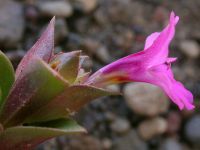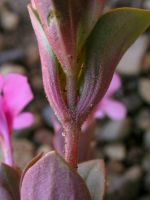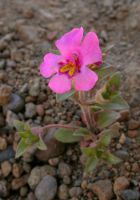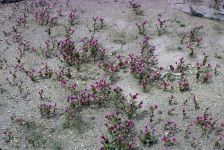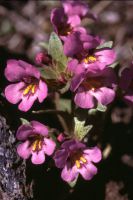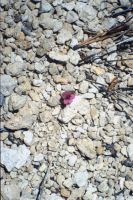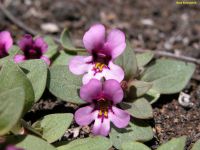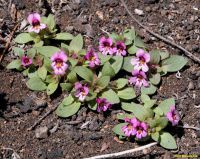Distribution: Occurring east of the Cascades crest in Washinton; British Columbia to California, east to Montana and Colorado.
Habitat: Dry, sandy, or gravelly soil among sagebrush desert or conifer forest at low to middle elevations.
Flowers: May-August
Origin: Native
Growth Duration: Annual
Conservation Status: Not of concern
Dwarf annual up to 1 dm. high, becoming much branched when well-developed, finely glandular-puberulent.
Leaves opposite, entire, inconspicuously 3-5 nerved, obtuse, the lower oblanceolate, the upper elliptic to narrowly ovate, up to 3.5 cm. long and under 1 cm. wide.
Flowers solitary in the leaf axils, sub-sessile; calyx 5-8 mm. long, the 5 sharp teeth glandular-puberulent, 1-3 mm. long; corolla rich magenta, marked in the throat with yellow and deeper red, 1-2.5 cm. long, bilabiate, the lips equal; stamens 4
Capsule splitting at maturity.
Publication: Phytoneuron 2012-39: 1–60. 2012.
Mimulus nanus Hook. & Arn. ssp. nanus
Mimulus nanus Hook. & Arn. var. nanus [JPM2]
PNW Herbaria: Specimen records of Diplacus nanus in the Consortium of Pacific Northwest Herbaria database
WA Flora Checklist: Diplacus nanus checklist entry
OregonFlora: Diplacus nanus information
E-Flora BC: Diplacus nanus atlas page
CalPhotos: Diplacus nanus photos

